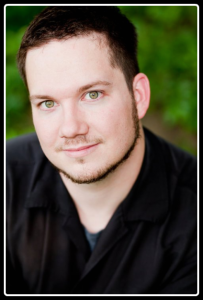 Last week I told you all about classical scene structure for novels. The core of it is that the scenes driving your story should always be tightly focused on a direct conflict between two characters, and the scene should end in catastrophe for the protagonist.
Last week I told you all about classical scene structure for novels. The core of it is that the scenes driving your story should always be tightly focused on a direct conflict between two characters, and the scene should end in catastrophe for the protagonist.
One More Word on Catastrophe
Now…there is a great range of things that can be called “catastrophes,” and your story’s genre, your own style, and the desired tone of the book can all determine just how grave the catastrophes really are. If you’re writing a cute little story about deers and bunnies, you don’t have to end a scene with the protagonist’s mother dying tragically.
Then again, Disney made it work.
Whatever your catastrophe is, relative to the protagonist’s story goal it needs to represent a significant setback. In fact, the catastrophe should be as significant as you want the scene to be. And they should get progressively bigger and bigger as the story goes along.
That doesn’t mean things have to get crazy-out-of-control by the end of your novel. It means you’ve got to pace yourself and plan ahead. It requires a delicate balance, but managing these things is exactly how we build gripping stories that drag the reader from start to end and deprive them of much-needed sleep.
A good scene drives the reader through it, without leaving a moment to breathe, plunging straight toward the catastrophe. And then the catastrophe should generate enough concern to keep them reading to the next scene. It’s fiendishly clever.
Filling in the Gaps
So! I’ve talked a lot about scenes now. I just mentioned the need to hook readers until the next scene. And if you read last week’s articles, you know that a scene is a very specific, rigorously-defined thing. The scenes make up the most interesting portion of your story, but they can’t be all of it.
So what’s left? There are actually a couple designations Deborah Chester uses, but by and large the most common of them is the “sequel.” In classical scene structure, a sequel is a moment of reflection following a fast-paced scene.
During a scene, there is no backstory, no explanation, no exposition at all. Everything is action and reaction — stimulus and response — and every word of a scene is tightly focused on the conflict in question. That gives a scene much of its power, but you can’t tell a whole story that way.
So we use the sequel as a chance to go back over the ground we just covered, filling in the missing pieces. Our protagonist pounds a fist on her hip and asks herself, “How could I be so stupid? I’ve known for years that the Knights of St. Newton never use indigo-colored laser blasts!”
(Actually, that didn’t turn out to be a good example at all, but I cherish the concept so much that I refuse to cut it out. Let’s forge on!)
Post-Traumatic Stress
During the sequel, the protagonist reflects on the things that happened during the scene, providing necessary context or explanation. He might tie the scene question into the larger story question, figure out some key element he’d overlooked during the heat of the conflict, or just provide a slow-motion recap of what actually just went down.
And during this moment of reflection, one of the main things the protagonist is going to think about is the catastrophe. That’s the nature of catastrophes. It makes for easy writing, and it’s usually a compelling read, too. We learn a lot about a character by how he reacts to adversity, and scene-ending catastrophes are excellent sources of adversity.
So the protagonist needs to review the overarching story goal, and figure out how this setback plays into his plans. He needs to recalibrate, and pick a new path. That’s the natural evolution of a sequel — it starts with an emotional reaction to catastrophe, moves through a thoughtful processing of the new dilemma, and leads to a decision as to how the protagonist will forge ahead.
And that part is critical. We want our protagonists to be active heroes, not reactive wimps. The first time I heard this noise about every scene ending in catastrophe, I thought, “If you do that, how can you avoid having a protagonist in a constant state of battered post-traumatic stress, reacting (at best) or driven to a standstill (at worst).”
The answer is in a well-made sequel. If you manage it right, the scenes make your story while the sequels make your characters. I’ll talk more about that tomorrow.





